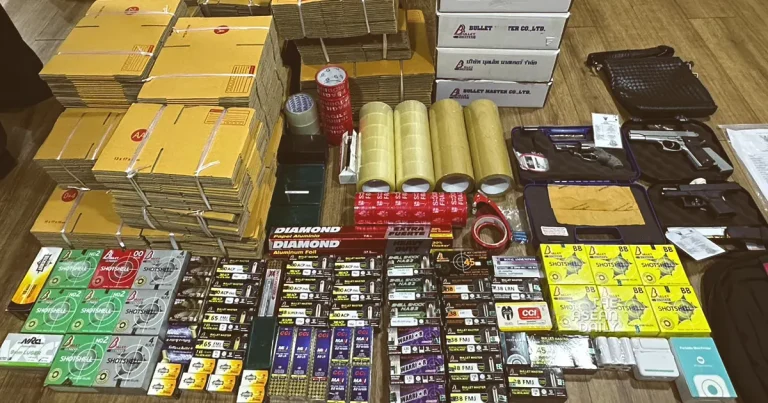25-10-2023 (BANGKOK) On October 3, a horrifying incident sent shockwaves through the heart of Bangkok. A 14-year-old boy carried out a deadly shooting at the Siam Paragon, one of Thailand’s most iconic shopping malls. The tragedy left three people dead and several others injured.
What makes this incident even more alarming is that the young shooter used a modified blank gun that he had purchased online. In the days following the attack, several individuals were arrested for selling a modified blank gun and ammunition to the teenager.
This chilling event in Bangkok echoes a similar incident that took place in July 2022, involving the assassination of former Japanese Prime Minister Shinzo Abe. In that case, the weapon used was a homemade, improvised gun constructed using materials readily available in commercial hardware stores.
These incidents serve as stark reminders of the growing threat posed by modified guns and the profound implications they have for public security.
Modified Blank Guns
A blank gun, despite not firing live ammunition, closely resembles a lethal firearm but expels blank cartridges instead of bullets. These are often used on film sets and as starting pistols for racing events. Unlike air guns or airsoft guns, which use compressed gas or springs to propel lightweight projectiles, blank guns and air guns are designed to mimic real firearms and do not fall under the category of firearms under Thai regulations.
In the Siam Paragon shooting, the blank gun sold to the assailant had been altered to fire live ammunition. While the potential lethality of modified blank guns is generally lower compared to real firearms, it depends on the overall build quality of the weapon. In this case, the gun proved lethal as it sustained a significant number of shots, resulting in fatalities and injuries.
Incidents involving modified and improvised weapons have gained attention throughout the region. In August, an individual sympathetic to the Islamic State in Indonesia was discovered to have converted an airsoft gun into a live weapon, raising concerns of an impending attack on the police’s security division headquarters.
While modified guns may often be limited in terms of durability and effectiveness, emerging technologies, such as 3D printing, have given rise to a burgeoning industry for crafting sophisticated homemade weapons, often used by criminal and terrorist networks.
3D-Printed “Ghost Guns”
3D printing, an engineering technique used to fabricate three-dimensional objects from digital design files, has been exploited by nefarious actors to manufacture weapons. Since the creation of the first 3D-printed firearm in 2013, the technology has become more accessible and affordable.
The manufacture and use of 3D-printed firearms have primarily been concentrated in Europe, North America, and Australia, with criminal and terrorist networks, particularly right-wing extremist groups, attempting to produce, deploy, and traffic these firearms.
Right-wing extremist Stephan Balliet’s attack on a Jewish synagogue in Halle, Germany, in 2019 used a gun with 3D-printed components. Since then, several far-right networks have sought to employ 3D-printed firearms in various countries.
Creating lethal 3D-printed firearms necessitates considerable skill and effort, but it affords criminals and terrorists operational security. It enables them to construct firearms discreetly in the safety of their homes, reducing the likelihood of interception by authorities, as these firearms remain unregistered and are challenging to detect.
Hence, they are often referred to as “ghost guns.”
Mitigating the Threat
The recent shooting at Siam Paragon serves as a stark reminder of the ongoing threat and the significant security implications associated with modified and improvised weapons. It underscores the sobering reality that these weapons can inflict harm, cause panic, and lead to loss of life.
Countries like Singapore have taken proactive measures to mitigate this threat, designating air guns as controlled items, thereby requiring approval, authorization, and licensing for ownership.
In December 2020, a 64-year-old Singaporean man was sentenced to jail for crafting three airsoft guns capable of firing steel ball bearings from discarded scrap metal.
In the aftermath of the Bangkok tragedy, Thai authorities have pledged to bolster firearms controls and close any legal loopholes related to online sales of illegally modified weapons.
While stringent gun legislation is undoubtedly crucial, governments across the region must also address underlying societal issues. Previous incidents such as the 2022 nursery attack in Uthai Sawan and the 2020 mall attack in Nakhon Ratchasima had highlighted concerns related to mental health and drug abuse.




